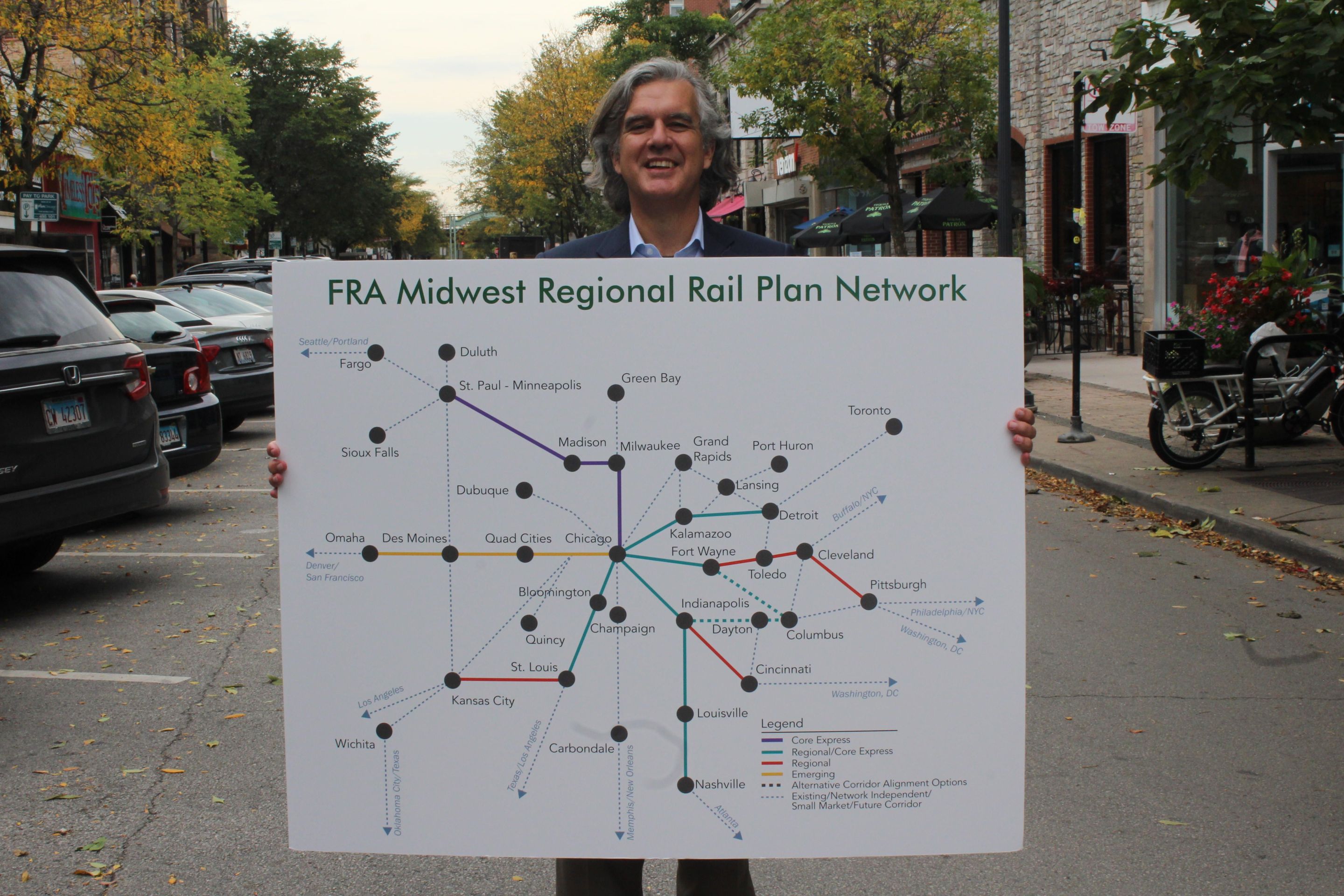This piece is syndicated from the Chicago Reader and sponsored by The Darrell R. Windle Charitable Fund and Polo Inn.
In the second part of our series spotlighting advocacy organizations working to make our region a better place to walk, bike, and ride buses and trains, we caught up with Rick Harnish, executive director of the Chicago-based High Speed Rail Alliance.
Founded in 1993 as the Midwest High Speed Rail Association, this nonprofit wants to see a nationwide network of 220 miles-per-hour train routes that would offer a fast, convenient, affordable, and safe alternative to driving and air travel. “We help individuals and local leaders understand what high-speed rail really is, why we need to build it, and what steps they can take to help make it a reality,” Harnish said.
If the alliance achieves its mission, it would be particularly beneficial for Chicago, since our city already has direct—albeit relatively slow and unreliable—Amtrak service to just about every major U.S. metropolis. Harnish said the only true high-speed rail corridor in the works in the U.S. will connect Los Angeles and San Francisco with a route allowing for speeds of over 200 mph, shortening the roughly 400-mile trip to under three hours. The closest thing we have to that right now in Illinois is Amtrak’s Chicago-to-St. Louis Lincoln Service route—which travels up to a relatively pokey 90 miles per hour on the Joliet-to-Alton stretch.
The Illinois Department of Transportation’s recently announced six-year plan includes a $246 million earmark for bumping the Lincoln Service speed limit up to 110 mph, hopefully by 2023. But Harnish says incremental progress isn’t going to get us where we need to go. “We need a network of services that all work together to connect entire regions in the entire country.”
The IDOT plan also includes $447 million for new passenger service to Moline, plus $275 million for a Rockford route. But given the opportunities for rail expansion made possible by the $1.2 billion federal infrastructure bill passed by Amtrak superfan Joe Biden, Harnish said Illinois needs to pick up the pace. “The state needs to make some decisions and get those trains running.” He also wants to see Illinois create new service to Peoria and Decatur, plus direct Amtrak access to O’Hare International Airport.
Not only would the latter make the airport more accessible from other parts of the Midwest, it dovetails with the alliance’s CrossRail plan for better crosstown Chicago transit. This would use the St. Charles Air Line, an existing rail corridor that parallels 16th Street in the South Loop, to connect Union Station to the Rock Island District and Metra Electric District lines. “That would become the core of an entirely new express service that would go across town, as opposed to just heading into town,” Harnish said.
CrossRail would also create a higher-speed, “one seat” ride from the southern suburbs and south side to O’Hare without the need to make a downtown transfer, making jobs at O’Hare and in the northern suburbs much more accessible for lower-income and working-class residents. “The system would be useful for so many more people,” Harnish said. “It really would be a game-changer for Chicago-area transit.”





